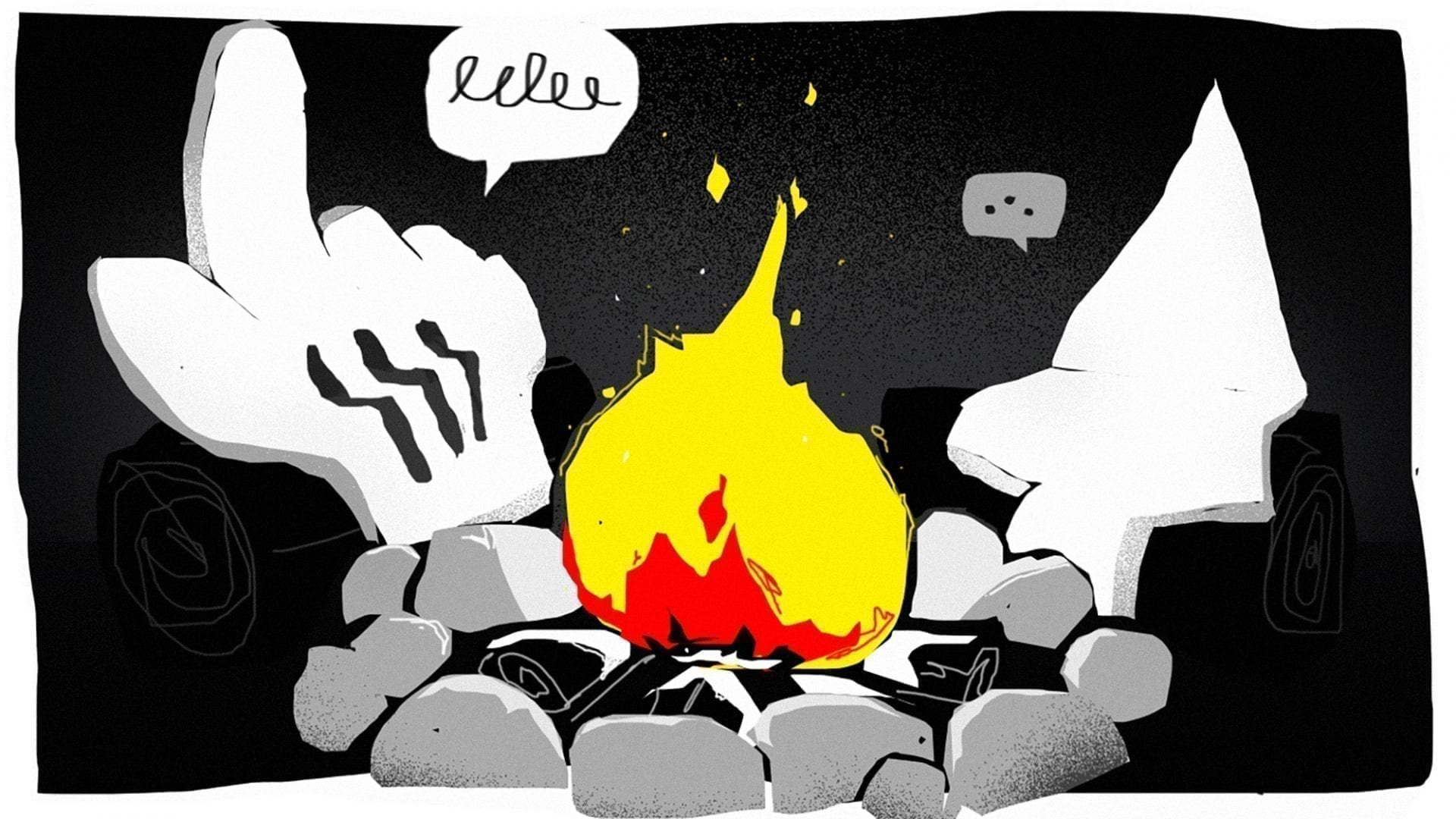UX writing 101 – How to narrate a smooth user experience
You’ve probably heard stories about, well, stories. Early humans around campfires, sharing their life-changing hunter-gatherer experiences. What you may not have thought about is that stories have a huge impact on digital user experiences, too. Enter the world of UX writing. After reading this post, you’ll know how to assess and improve user experiences from the storytelling point of view. This story begins with…

What is UX writing?
UX writing creates effective interactions between the user and a website, application or service in every stage of the user journey. It is the copy in titles, menus, and forms, CTAs on buttons, hints, error messages and explainers (often called microcopy). Yes, it’s all part of the UX, and not a small one either.
This is what it all comes down to: users hate surprises. The first goal of a UX writer is to always make it crystal clear what to expect in each phase of the user journey. Following the three Cs of clarity, conciseness, and consistency will help you add that intuitive storyline to the user experience.
Clarity
Defying the threat of sounding obvious, I’m starting with clarity. Think about it – you don’t want users to spend their precious time trying to make sense of what your product or service is trying to tell them. Pointless jargon and difficult technical terms that only you and your team know are big no-nos. This touches the very core of content strategy: always know who you’re talking to – in most cases, it’s not someone exactly like you.
We have quite a low tolerance for obstacles when it comes to websites and other digital products, so you’ll want to make the user flow as intuitive and easy as possible. Seriously, promise to keep it simple. A good rule of thumb is to only publish text that can be understood by a 12-year-old. Unless of course, you’re writing for an audience younger than that.
Conciseness
Every sentence, every word, every syllable has a job to do. Sad but true, nobody will eyeball every corner of your magnificent website or digital service. Users scan the content in a blink of an eye and skip parts that appear too heavy or complex. Avoid walls of text and instead organize the content into light chunks that are delightful to digest.
There’s no reason to show all your cards at once. Too much information is a powerful turnoff, as it overwhelms users easily. This is part of the bigger content design picture. Use CTAs like “Read more“ to indicate how the user can find more detailed information, should s/he need it. If you want to sound like an expert to your coworkers, refer to this as progressive disclosure. Very pro.
Consistency
Especially the third C requires you to see the product or service as a whole. For example, after you’ve chosen to call the desired action “a booking”, “a booking” it shall be until it has been confirmed by the user. Don’t go confusing people by using different words for the same thing halfway through an action.
There are some instances where you may want to ease up on this one because digital UX is encountered on different devices and platforms. For space restrictions alone, the copy may need to be separately optimized for mobile and desktop. Overall, a good UX depends on a consistent style and use of words. Remember: users hate surprises.
More UX writing best practices
There’s quite a lot to consider once you start packing more than a snorkel on your UX writing adventures. Needless to say, the style and tone of writing should originate from your brand identity. However, the following points fit most cases.
- Activity is contagious – Use active language to make it natural for users to grasp that activity. Start with the action you want users to perform, and make it stupidly simple to understand.
- Specific over generic – Descriptive words trump vague expressions that can be interpreted in several ways. However, think about what words your audience prefers and relates to a certain action.
- Pushy vs. efficient – The difference can be visually small, but huge in impact. Being concise doesn’t rule out kindness or likeability.
- Positivity drives actions – No pom-poms required, just make the user feel like things are moving forward, getting solved and happening. Flow experienced by the user is the cornerstone of a good UX.
- Remember grammar – There’s a difference between a colloquial, friendly or upbeat style and plain wrong.
- Then there’s humor – The easiest way to succeed with humor is to not do it.
If that wasn’t enough, check out more UX writing tips in this post on Medium.
Conclusion
The underlying tasks of UX writing are to build trust, help the user achieve something, and improve the overall user experience. UX writing tells a descriptive and efficient story for the users to follow on their journey towards an action or a goal – and you will want them to get there.
I’d like to leave you with my favorite rule of thumb that applies to all areas of UX:
When the user doesn’t need to think, your design is winning.











